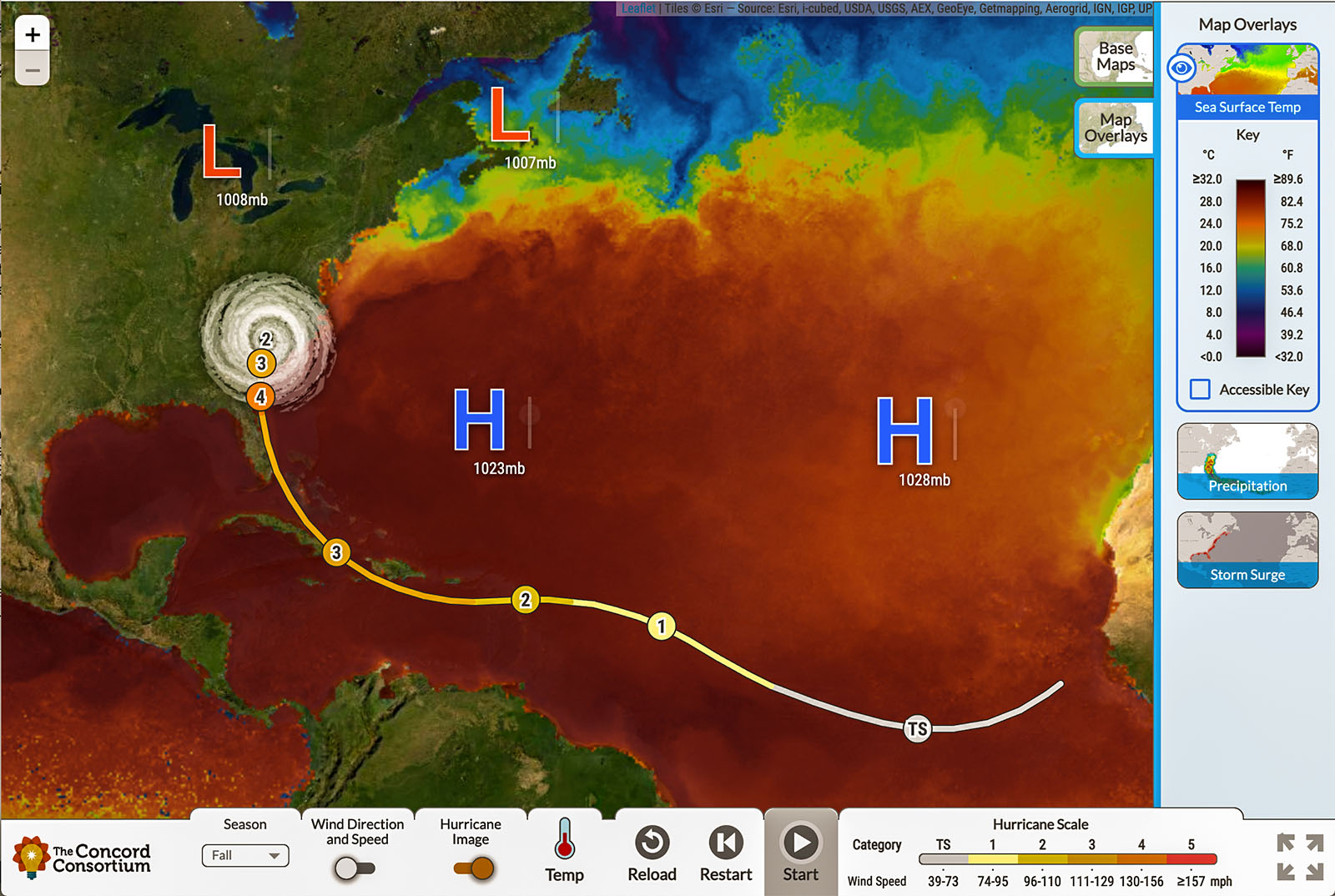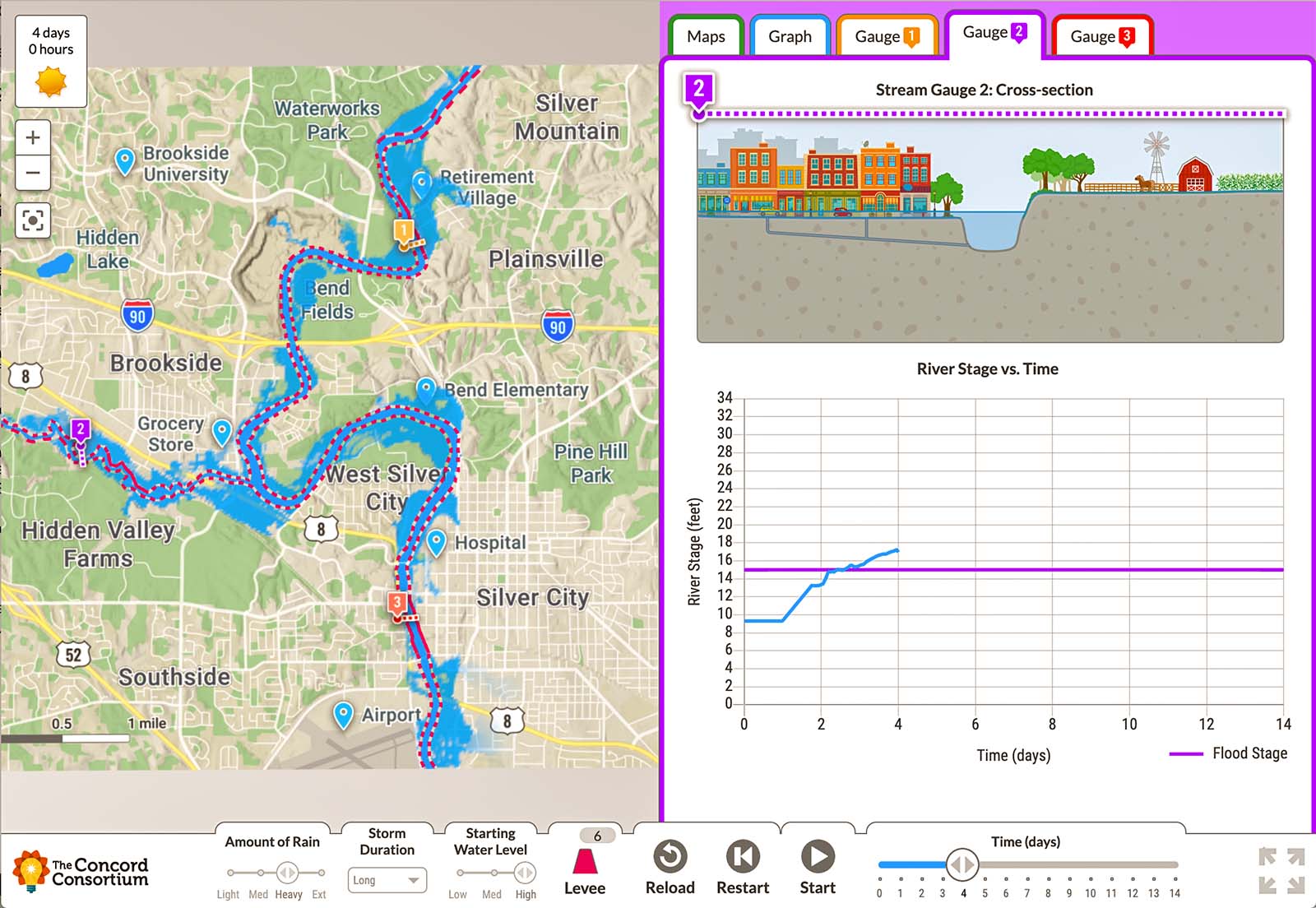Addressing Socioscientific Issues While Studying Natural Hazards
“The specter of climate change threatens worsening natural disasters, rapid urbanization, forced migration, and economic hardship for the most vulnerable.” — Tedros Adhanom Ghebreyesus, Director-General of the World Health Organization
As global temperatures continue to rise, so do the number, size, and impact of climate-fueled natural hazards, transforming lives across the planet. The Washington Post reported that in 2021, one in three Americans had experienced a natural hazard. Climate scientists warn that there will be more frequent and more extreme events. For today’s students, the idea of climate change is no longer an abstract concept.
Teaching about natural hazards such as wildfires, floods, and hurricanes and their relationship to climate change poses an opportunity and a challenge. Students are now likely to have some direct experience with living through or knowing someone who has lived through a natural hazard. This makes the study of natural hazards personally relevant and meaningful. Along with this real-world experience, however, many young people are also anxious and angry about the insufficient ways in which climate change is being addressed. The GeoHazard: Modeling Natural Hazards and Assessing Risks project has identified opportunities for students to critically engage in discussions about natural hazards and considerations related to how these hazards are affecting people.
Three of our online curriculum modules about hurricanes, wildfires, and inland flooding are now publicly available. Each GeoHazard module supports student inquiry with embedded Earth systems models that allow students to explore the factors that influence the formation, progression, and severity of each hazard, as well as the factors that contribute to potential risks to people and their communities. During three years of pilot testing the modules, we learned that it is important to help teachers engage students in these topics despite the difficult concepts and emotions that often accompany these discussions.
Situating student learning in the context of socioscientific issues
A Framework for K-12 Science Education identifies the importance of connecting natural hazards to human activities. ESS3B: Natural Hazards and ESS3:D Global Climate Change explore the human activities that have significantly altered the environment and the major factors responsible for these environmental changes. They charge students with investigating human vulnerabilities and understanding human behavior.
Our hurricane, wildfire, and flood modules all address the following questions:
- What environmental factors play major roles in the development of this natural hazard?
- How does this natural hazard impact people and their communities?
- What do rising global temperatures mean for the risks and impacts humans face from this hazard?
-
Natural hazards are both awe-inspiring and terrifying, and they can spark students’ natural curiosity about the power of Earth’s systems. Because they are personally relevant to so many students, they also provide a rich context to explore socioscientific issues. This means that in each module, students explore both the scientific phenomena of a natural hazard and the impacts on people and their communities, including the disproportionate consequences for vulnerable members of the population. In the hurricane module (Figure 1), for example, students investigate the reasons why some members of a population cannot evacuate prior to a hurricane, considering how illness, poverty, and occupation (for example, first responders and firefighters) might prevent evacuation. These topics can generate deep discussions and allow students with personal experience to share their stories.

While many teachers are interested in teaching about natural hazards, some find it difficult to discuss the socioscientific issues in their classrooms. Through teacher tips embedded in the modules, we support teachers in handling socioscientific issues, focusing on places where they can facilitate discussions of students’ experiences. A separate guide provides additional information on establishing norms for discussions around personal experiences and supporting students to construct explanations and ideas that are based on evidence as much as possible.
Similarly, we prompt teachers to discuss issues around climate change and what people might do to reduce the impacts of future hazards. Helping students learn about the part people play in causing climate change, as well as their role in addressing it, is an important part of the Next Generation Science Standards.
Inviting students to share experiences
Each module begins with a prompt inviting students to describe their lived experiences with the natural hazard and to share their questions. The goal is to provide an opportunity for students to express their full range of experiences and to support teachers in holding a conversation that could, for example, include small, local floods to catastrophic flood events. Student responses to this question in the flood module (Figure 2) ranged from those who had never witnessed a flood to some who had firsthand experience.

“I never experienced flooding but I could imagine how people were impacted by this.”
“I have never been seriously impacted by flooding but I have been stuck in my house and out of my house for multiple days because the water was over the road.”
“My grandma’s house got flooded and she had to live with us for four months till she would get her house fixed.”
“Someone I know has been impacted by a flood. The flood of 2021, one of my sister’s friend’s house was destroyed by the flood waters and they had lost everything they have owned. They had to quickly evacuate their home with nowhere to stay.”
“Yes the last time it flooded our whole yard was covered from our Creek being so high. It was coming in through the side of our house and we had to move everything that was in the den.”
As these responses make clear, students are already grappling with natural hazards and the complex ways in which these hazards intersect with their daily lives. Rather than leaving these social aspects out of the science classroom, the GeoHazard modules explicitly integrate instructional strategies for addressing them. By exploring natural hazards in the context of personal and community vulnerabilities, students can expand their notion of why studying these real-world topics is important for tackling the consequences of global warming and adapting to future natural hazard emergencies.
Amy Pallant (apallant@concord.org) is a senior research scientist.
Trudi Lord (tlord@concord.org) is a senior project manager.
This material is based upon work supported by the National Science Foundation under grant DRL-1812362. Any opinions, findings, and conclusions or recommendations expressed in this material are those of the author(s) and do not necessarily reflect the views of the National Science Foundation.

